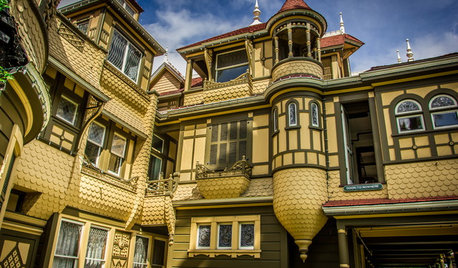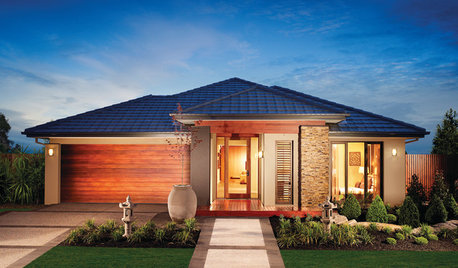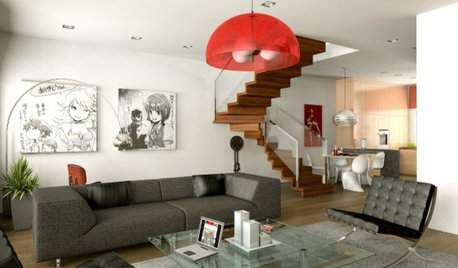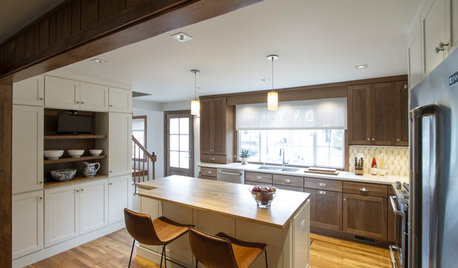Story time: How long does a Samsung TV last?
Addy Cheong
5 years ago
Featured Answer
Sort by:Oldest
Comments (29)
Related Discussions
Part 2 Adventures of Gomer & Margie (Story Using TV Shows)
Comments (3)Haahahahaa! Karen this is SO funny. I'm bursting into laughter reading these posts again, and remembering writing and reading them at the time. Well done! And my favourite part about Martha Stewart dropping in with her dish towel parachute!!! WAY too funny!...See MoreOur Story Using TV Shows....The Entire Story Line
Comments (2)Thanks for all your hard work Karen! Can't wait to read it in its entirety. Jodi-...See MoreHow long have you had your flat screen tv?
Comments (18)So, maybe to clarify...Our smaller tv (~10 yrs old) gets lots of use. It is on from about 5-10 pm at minimum on weekdays and more on the weekend. The larger tv doesn't get quite as much use, but it still gets a fair amount. That is about 26,000 hours (I rounded to 50 hours for the weekly average) on the smaller tv in the 10 years. I do not know what is considered average or expected for the life of a flat screen, but I just looked for an answer and the plasmas are supposed to last 100,000 hours and I expect the LED/LCD are similar. That is a lot of tv watching. If we get 100,000 hours, that would mean about 40 years! Four years does not seem like very much time. I would be very unhappy....See MoreI would like to add an app to my Samsung smart television.
Comments (18)Oh Mary, yes I did. Couldn't decide to tell you the long or short story. Thank you for caring. I was looking for Acorntv right? I went to Apps on my Samsung and it was not with Netflix and the other few apps that came with the television. Chatted with Samsung and my television does not support Acorntv. Saw an ad for Acorn on line and filled out the info and got to the part where I was free to write on the form. Asked how I can get this app since Samsung told me my television serial # doesn't support it. No answer. Filled out the Acorntv subscription form again and complained about them not answering and updated my request to call me. "I am on a major forum and I will provide them feedback." Meanwhile, I went to my X1 XFINITY button on their remote and pushed it. I use some tabs on it every day. Went through all the tabs: Guide, On Demand, Search and Apps. Looked at Apps again. ACORN is not there. Went to Search. ACORN is not recognized. Never used On Demand before X1 and new television. Found buried in Xfinity' s On Demand tab, a couple of rows down wasACORNtv app. Signed up to see what that would do. At the same time ACORNtv called concerning what I wrote on my form and listened to my story. They called back and said I was now subscribed to two places: Acorntv Direct ( which needs Roku) and Xfinity Acorntv (doesn't need Roku) Same Acorntv. Same price. Lovely woman said she would take me off of Acorntv Direct and let me be billed through Xfinity. Any questions or comments?...See MoreAddy Cheong
5 years agolast modified: 5 years agoAddy Cheong
5 years agowdccruise
5 years agoAddy Cheong
5 years agoAddy Cheong
5 years agoAddy Cheong
5 years agoElements of Design
4 years agolast modified: 4 years agoM
4 years agoElements of Design
4 years agoM
4 years agoElements of Design
4 years agoAnimalsAre BeautifulPeople
3 years agoinkkusmart
3 years agoLouise Smith
3 years agoRichard Dollard
3 years agodadoes
3 years ago
Related Stories

INSIDE HOUZZHow Much Does a Remodel Cost, and How Long Does It Take?
The 2016 Houzz & Home survey asked 120,000 Houzzers about their renovation projects. Here’s what they said
Full Story
HOUZZ TV FAVORITESHouzz TV: Beyond the Ghost Stories of the Winchester Mystery House
Supernatural tales swirl around this perplexing Victorian mansion, but early home tech is the real marvel. See it for yourself
Full Story
FEATURESOscar Time: Does Your House Have Star Quality?
Private homes are a hot commodity in the movie industry. See how one landed a role in ‘La La Land’
Full Story
DIY PROJECTSMake a Beautiful and Long-Lasting Driftwood Centerpiece
Add succulents to found wood for an easy arrangement that looks straight from a designer florist's shelf
Full Story
ROOFSThis Long-Lasting Roofing Material Works With Many Styles
With their durability and wide range of colors and molded shapes, concrete roof tiles are worth a look
Full Story
MORE ROOMSDesigns for Living: Every Room Tells a Story
8 Rooms, 8 Little Stories. What Tale Does Your Interior Tell?
Full Story
COLORWhen Color Could Kill: Stories From the History of Paint
Delve into paint's storied past — what you learn about its history and modern incarnations may surprise you
Full Story
LIFEIs Cabin Fever Real? Share Your Story
Are snow piles across the U.S. leading to masses of irritability and boredom? We want to hear your experience
Full Story
ARCHITECTURETell a Story With Design for a More Meaningful Home
Go beyond a home's bones to find the narrative at its heart, for a more rewarding experience
Full Story
TRANSITIONAL HOMESReworking a Two-Story House for Single-Floor Living
An architect helps his clients redesign their home of more than 50 years to make it comfortable for aging in place
Full StoryMore Discussions



dadoes